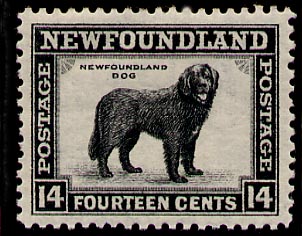
History

 |
Newfoundland History |
 |
Conditions in Newfoundland in 1929-30
[This text was publihed in the Canadian Annual Review; for the full citation, see the end of the document.]
The fiscal year ended June 30th, 1929, was a prosperous one for Newfoundland. Total import and export trade was $66,035,084, an increase of about $5,000,000 on the preceding year. Of upwards of $29,000,000 imports approximately $11,600,000 was supplied by Canada . Canada 's purchases from Newfoundland were slightly more than $3,000,000. The United States was the Island's leading customer, with Great Britain second, Brazil third, Canada fourth, Spain fifth and Portugal sixth.
A proposal by Sir William Coaker that Parliamentary Government be suspended in Newfoundland, and government by commission substituted, on the ground that Parliamentarians were being reduced to the plane of mere solicitors of patronage for their districts, was not seriously entertained.
In March, 1930, a new treaty was discussed at Ottawa between Sir Richard Squires and the Canadian Minister of Finance, Hon. C. A. Dunning.
Three By-elections held on May 17,1930, resulted in victories for the Squires Government; two seats were retained, and one was a gain. An interesting feature was the election of Lady Squires, the wife of the Prime Minister, for Lewisporte, the first woman to enter the Newfoundland General Assembly. These By-elections gave the Administration 30 seats as against 10 Opposition.
On May 28, the Annual Session of the Assembly was opened by the Governor, Sir John Middleton. In the Speech from the Throne tariff readjustments based on a proposed trade treaty with Canada were foreshadowed. Other matters mentioned were the prospect of a new pulp and paper development by American capital in the Gander areas; the possibility of opening the United States market to Newfoundland fish on more favourable terms; and announcement of a new agreement with the British Empire Steel Company for the operation of the Bell Island Mines.
The Burin peninsula of the Island was devastated by a tidal wave on Nov. 17, 1929, with considerable loss of life. Damage to property exceeded $1,000,000. A relief committee was at once organized at St. John's under the Chairmanship of the Governor, Sir John Middleton, and emergency relief sent.
Source: The Canadian Annual Review of Public Affairs, 1929-30, Toronto, The Canadian Review Company, 1930, pp. 133-134.
© 2004 Claude Bélanger, Marianopolis College |